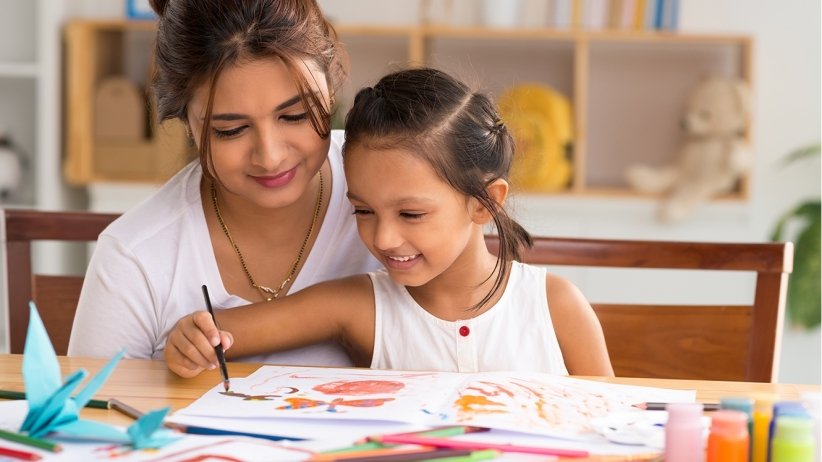The Parenting & Family Blog

How to Teach Kids Emotional Intelligence and Self-Regulation
In today’s fast-paced world, emotional intelligence and self-regulation are vital for children. These skills help them navigate social interactions, tackle academic challenges, and support personal growth. However, many parents and educators find it hard to teach these skills effectively. This guide will explore why building emotional intelligence in kids is important and share strategies for self-regulation. By the end, you’ll understand how to nurture emotional control in your child, setting them up for success and well-being.
Emotional intelligence helps children understand their feelings, empathise with others, and make thoughtful decisions. Self-regulation allows them to control impulses, handle frustration, and stay focused. Together, these skills build resilience, adaptability, and emotional health—qualities needed for thriving in childhood and adulthood.
Key Benefits of Emotional Intelligence and Self-Regulation

Why It Matters
Developing emotional intelligence in children is essential. It helps them manage their emotions better, leading to improved decision-making and problem-solving. A study by the University of Cambridge found that children with higher emotional intelligence often perform better academically and socially. They handle stress better and are less prone to disruptive behaviour.
Self-regulation is the ability to control behaviours, emotions, and thoughts to achieve long-term goals. It is key to emotional intelligence and plays a big role in a child’s development. Kids who master self-regulation face challenges more effectively, resist impulsive actions, and focus better on tasks. These skills benefit them in childhood and lay the groundwork for success in adulthood.
Real-Life Applications
Imagine a child with strong emotional intelligence and self-regulation skills. In the classroom, this child is likely to interact positively with peers, resolve conflicts peacefully, and approach learning enthusiastically. Outside class, these skills lead to healthier relationships, better mental health, and a stronger sense of self-worth.
Children who practice emotional control are more likely to:
- Resolve conflicts calmly instead of reacting aggressively.
- Persist with challenging tasks rather than giving up.
- Show empathy by recognising and responding to others’ emotions.
Building emotional intelligence in kids has a profound impact on their lives.
Step-by-Step Guide to Teaching Emotional Intelligence and Self-Regulation
Understanding Emotional Intelligence
Before we discuss strategies, let’s define emotional intelligence. It includes five key components:
- Self-awareness: Recognising one’s own emotions.
- Self-regulation: Managing emotions and controlling impulses.
- Motivation: Using emotions to achieve goals.
- Empathy: Understanding the feelings of others.
- Social skills: Building and maintaining healthy relationships.
These components can be nurtured from a young age, creating a foundation for lifelong emotional intelligence.
Teaching Self-Awareness
To encourage self-awareness, help children recognise and name their emotions. Use simple words to describe feelings like happy, sad, angry, or frustrated.
Tips for Teaching Self-Awareness:
- Encourage your child to express their feelings in various situations.
- Use books to introduce emotional vocabulary.
- Ask questions like, “How did that make you feel?” to reflect on their emotions.
Recognising their feelings fosters emotional literacy, making it easier for them to manage emotions.
Teaching Kids Emotional Control
To teach emotional control, give kids tools to manage their feelings. Here are some practical strategies:
Role-Playing Scenarios
Role-playing is a great way to teach emotional control. Create scenarios where your child navigates challenging emotions, like disappointment or anger.
Examples of Role-Playing Scenarios:
- Pretend a favourite toy is taken and practice responses.
- Role-play a disagreement with a friend, exploring ways to resolve it.
Encourage them to try different responses and discuss possible outcomes. This builds emotional intelligence and enhances problem-solving skills.
Modelling Emotional Intelligence
Children learn by watching adults. As a parent or educator, modelling emotional intelligence is key.
Ways to Model Emotional Intelligence:
- Share your emotions: “I’m feeling frustrated, so I’ll take a few deep breaths.”
- Show empathy: “It looks like your friend is sad. Let’s ask if they want to talk.”
- Use self-regulation strategies when stressed.
By showing healthy emotional management, you give kids real-life examples of emotional control.
Building Emotional Intelligence in Kids
Building emotional intelligence needs ongoing effort and patience. Here are more strategies to consider:
Encouraging Empathy
Empathy is a core part of emotional intelligence. Encourage your child to think about others’ feelings.
Ways to Foster Empathy:
- Ask your child, “How do you think your friend felt when that happened?”
- Use stories to highlight characters’ emotions.
- Model empathetic behaviour in your daily life.
These discussions build compassion and understanding, strengthening your child’s emotional intelligence.
Celebrating Emotional Milestones
Acknowledge and celebrate your child’s emotional milestones. Recognising achievements reinforces positive behaviour.
Examples of Emotional Milestones to Celebrate:
- Comforting a friend during a tough time.
- Showing self-control when frustrated.
- Expressing emotions clearly.
Celebrations can be simple, like praise or a small reward, encouraging your child to keep building emotional intelligence.
Additional Expert Tips & Common Mistakes to Avoid

Best Practices
Alongside the strategies above, consider these best practices:
- Encourage open communication: Create a safe space for your child to share feelings.
- Use visual aids: Emotion charts help younger kids identify their feelings.
- Incorporate mindfulness techniques: Breathing exercises and yoga promote emotional regulation.
Common Mistakes and Misconceptions
Avoid these pitfalls when teaching emotional intelligence:
- Minimising emotions: Dismissing feelings with phrases like “Stop crying” can invalidate emotions. Instead, validate their feelings: “I understand you’re upset. It’s okay to feel that way.”
- Over-sheltering children: Let kids experience age-appropriate frustrations. Shielding them from discomfort can hinder emotional growth.
- Expecting instant results: Developing emotional intelligence takes time. Be patient and consistent.
Advanced Insights and Expert Recommendations
Adding Complexity
As your child matures, introduce more complex emotional concepts, like emotional triggers and coping strategies.
Examples of Advanced Strategies:
- Discuss how certain situations may trigger emotions and ways to manage them.
- Explain emotional boundaries—it’s okay to express feelings but not to hurt others.
- Introduce journaling to help older kids process emotions.
Unique Industry Perspectives
Experts in child psychology stress a holistic approach to emotional intelligence. This includes:
- Physical activity: Exercise helps kids manage stress.
- Creative expression: Art, music, and storytelling provide healthy emotional outlets.
- Mindfulness practices: Meditation and breathing exercises boost self-awareness and regulation.
A Guide to Building Emotional Control and Resilience
Teaching kids emotional intelligence and self-regulation is a vital investment in their future. By nurturing these skills, you empower them to face life’s challenges with resilience and grace. Remember, the journey toward emotional intelligence is ongoing and requires patience and understanding.
As you embark on this journey with your child, celebrate their progress and foster an environment of emotional growth. Together, you can lay the foundation for a lifetime of emotional well-being and success.
Use these strategies in your parenting or teaching. You’ll see your child become more emotionally intelligent and better at self-regulation. What steps will you take today to nurture your child’s emotional development?









